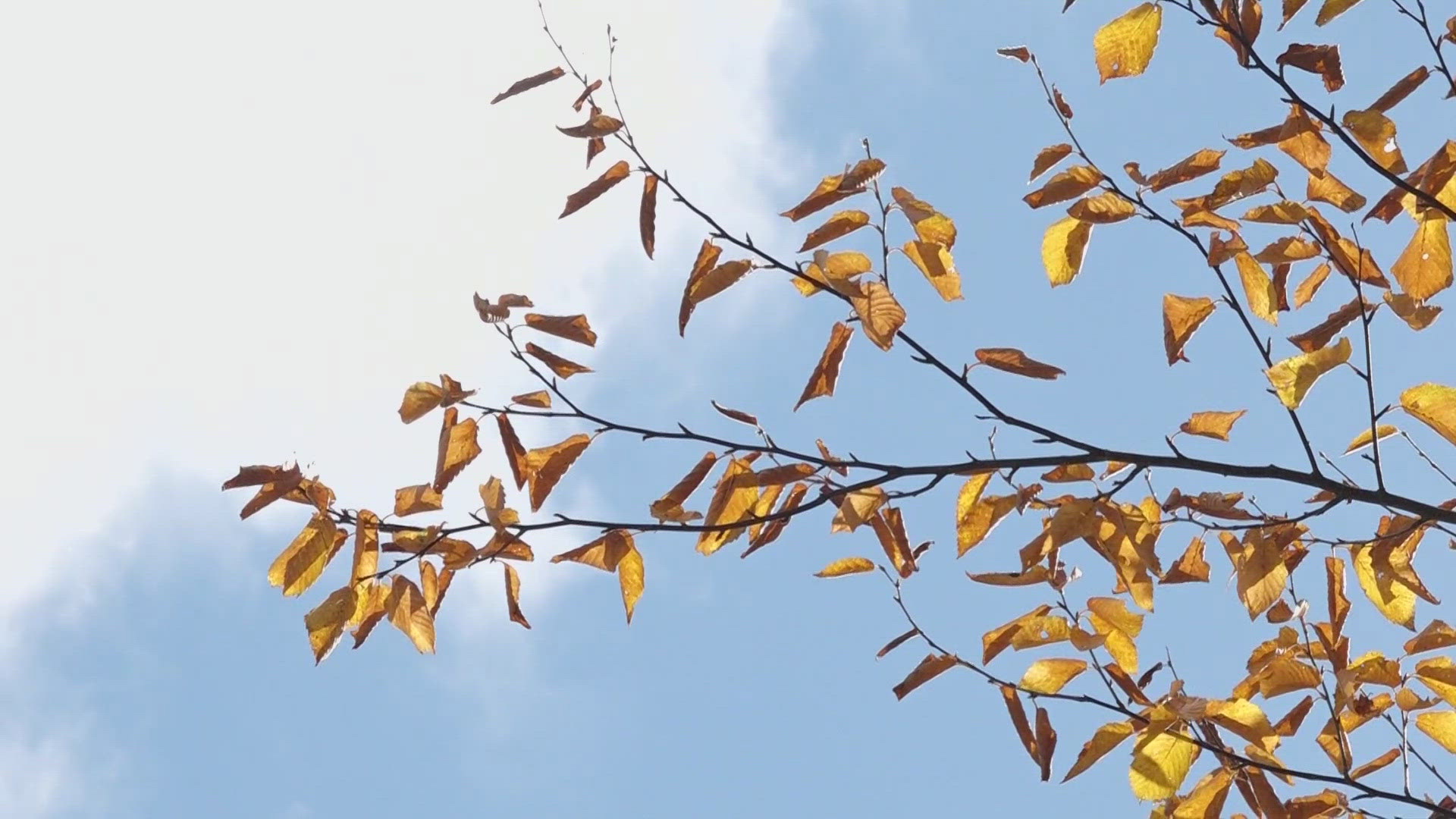MAINE, Maine — Peak fall foliage is set to occur later and later on Mount Desert Island as the climate continues to change, introducing new challenges to a region that usually is quiet by October’s end.
"Fall foliage has been delayed about a day a decade since the 1950s," Dr. Stephanie Spera, a researcher at the University of Richmond, said after researching the region.
She and her team looked back when trees reached peak color over the past 70 years. In 1951, the region peaked in the first days of October. But now, "it’s happening the fifteenth and the sixteenth," Spera said.
The main reason for the creeping delay is rising temperatures, but the past 20 years have revealed that peak foliage is increasingly harder to predict. The primary suspect is the weather.
"Precipitation is getting more erratic. We're getting ... instead of having rainfall, you're like oh, we get a few inches a month. You'll have months without rain, months with tons of rain," Spera explained.
To plot out the trend, she and her team collected old photographs, newspaper clippings, and foliage reports to fill in the time before satellite imaging. Yet, an inherent limitation to Spera’s work is defining "peak foliage."
Spera, who grew up in Massachusetts, said most default to "you know it when you see it."
The Maine Department of Agriculture, Conservation & Forestry (DACF) creates a weekly foliage report throughout the fall each year. It is a combined effort from foresters and rangers across the state. Morten Moesswilde, the director of the forest policy and management division with the Maine Forest Service, said that in the end, it is subjective.
"It’s a question of gauging what are they likely to see, what is the weather doing, how bright are the colors, what species are turning?" Moesswilde said.
DACF reported earlier this past fall that peak foliage on Mount Desert Island would occur on Oct. 16, which aligns with Spera’s data. However, the research predicts that in 30 years, peak foliage will be at the end of the month.
"If we continue to warm on the track that we are and that's what the trees are responding to is primarily temperature, it's only going to get later and later," Spera said.
More and more tourists are visiting Acadia National Park in the fall, creating new challenges at a time when Acadia and Bar Harbor are preparing to close for the winter.
"Indigenous Peoples' Day weekend was probably one of the busiest weekends the park has ever seen," Amanda Pollock, the public affairs specialist for Acadia National Park, said.
Pollock said the park is preparing for the future and using its "RAD" system—standing for resist, adapt, direct—to plan ahead.
"That is a tool that helps managers make these really hard decisions when we are in a time of such rapid change," Pollock said.
Spera is planning to expand her fall foliage research to other parts of the American northeast and is accepting submissions of photos old and new at sspera@richmond.edu.

